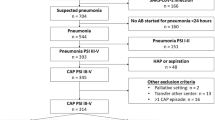Abstract
Objective
In March 2019, the sedative in the therapeutic hypothermia protocol at Bellevue Hospital Center and NYU Langone Health changed from morphine to dexmedetomidine. This study evaluated the impact of this change on efficacy and safety parameters.
Study design
This was a retrospective, observational cohort study including neonates with HIE undergoing therapeutic hypothermia (N = 70) at two regional perinatal medical centers.
Results
Baseline demographics, pain scores, hemodynamics, and time to enteral feeds were similar between dexmedetomidine (N = 34) and morphine (N = 36) patients. Dexmedetomidine patients received more breakthrough morphine (0.13 ± 0.13 vs 0.04 ± 0.09 mg/kg, p = 0.001), but less cumulative morphine (0.13 ± 0.13 vs 1.79 ± 0.23 mg/kg, p < 0.0001). Morphine patients on invasive ventilation required increased support (0 vs 31.58%, p = 0.02).
Conclusion
Dexmedetomidine is effective and safe for sedation and analgesia during therapeutic hypothermia. It reduced total opioid usage, with no increased incidence of adverse events.
This is a preview of subscription content, access via your institution
Access options
Subscribe to this journal
Receive 12 print issues and online access
$259.00 per year
only $21.58 per issue
Buy this article
- Purchase on Springer Link
- Instant access to full article PDF
Prices may be subject to local taxes which are calculated during checkout




Similar content being viewed by others
References
Wassink G, Lear CA, Gunn KC, Dean JM, Bennet L, Gunn AJ. Analgesics, sedatives, anticonvulsant drugs, and the cooled brain. Semin Fetal Neonat. 2015;20:109–14.
Yildiz EP, Ekici B, Tatli B. Neonatal hypoxic ischemic encephalopathy: an update on disease pathogenesis and treatment. Expert Rev Neurotherapeutics. 2017;17:449–59.
Azzopardi D, Strohm B, Marlow N, Brocklehurst P, Deierl A, Oddama A, et al. Effects of hypothermia for perinatal asphyxia on childhood outcomes. N. Engl J Med. 2014;371:140–9.
Gluckman PD, Wyatt JS, Azzopardi D, Ballard R, Edwards AD, Ferriero DM, et al. Selective head cooling with mild systemic hypothermia after neonatal encephalopathy: multicenter randomized trial. Lancet. 2005;365:663–70.
Guillet R, Edwards AD, Thorasen M, Ferriero DM, Gluckman PD, Whitelaw A, et al. Seven to eight year follow-up of the CoolCap trial of head cooling for neonatal encephalopathy. Pediatr Res. 2012;71:205–9.
McAdams RM, Juul SE. Neonatal encephalopathy: update on therapeutic hypothermia and other novel therapeutics. Clin Perinatol. 2016;43:485–500.
Gunn AJ, Thorasen M. Hypothermic neuroprotection. NeuroRx. 2006;3:154–69.
Angeles DM, Wycliffe N, Michelson D, Hoslhouser BA, Deming DD, Pearce WJ, et al. Use of opioids in asphyxiated term neonates: effects on neuroimaging and clinical outcomes. Pediatr Res. 2005;57:873–8.
Thorasen M, Satas S, Lobert EM, Whitelaw A, Acolet D, Lindgren C, et al. Twenty four hours of mild hypothermia in unsedated newborn pigs starting after a severe global hypoxic ischemic insult is not neuroprotective. Pediatr Res. 2003;50:405–11.
Pokela ML. Effect of opioid-induced analgesia on beta-endorphin, cortisol and glucose responses in neonates with cardiorespiratory problems. Biol Neonate. 1993;64:360–7.
Festekjian A, Ashwal S, Obenaus A, Angeles DM, Denmark TK. The role of morphine in a rat model of hypoxic-ischemic injury. Pediatr Neurol. 2011;45:77–82.
Dahmani S, Paris A, Jannier V, Hein L, Rouelle D, Scholz J, et al. Dexmedetomidine increases hippocampal phosphorylated extracellular signal-regulated protein kinase 1 and 2 content by an alpha-2 adrenoreceptor-independent mechanism. Anesthesiology. 2008;108:457–66.
Paris A, Mantz J, Tonner PH, Hein L, Brede M, Gressens P. The effects of dexmedetomidine on perinatal excitotoxic brain injury are mediated by the alpha-2a-adrenoreceptor subtype. Anesth Analg. 2006;102:456–61.
Ren X, Ma H, Zuo Z. Dexmedetomidine postconditioning reduces brain injury after brain hypoxia-ischemia in neonatal rats. J Neuroimmune Pharm. 2016;11:238–47.
Ma D, Hossain M, Rajakumaraswamy N, Arshad M, Sanders RD, Franks NP, et al. Dexmedetomidine produces its neuroprotective effect via the alpha-2a-adrenoreceptor subtype. Eur J Pharm. 2004;502:87–97.
Ezzati M, Broad K, Kawano G, Faulkner S, Hassell J, Fleiss B, et al. Pharmacokinetics of dexmedetomidine combined with therapeutic hypothermia in a piglet asphyxia model. Acta Anaesthesiol Scand. 2014;58:733–42.
McPherson C. Sedation and analgesia in mechanically ventilated preterm neonates: continue standard of care or experiment. J Pediatr Pharm Ther. 2012;17:351–64.
McAdams RM, Pak D, Lalovic B, Phillips B, Shen DD. Dexmedetomidine pharmacokinetics in neonates with hypoxic-ischemic encephalopathy receiving hypothermia. Anesthesiol Res Pract. 2020;2020:1–15.
O’Mara K, Weiss MD. Dexmedetomine for sedation of neonates with HIE undergoing therapeutic hypothermia: a single-center experience. Am J Perinat Rep. 2018;8:e168–73.
Taniguchi T, Kidani Y, Kanakura H, Takemoto Y, Yamamoto K. Effects of dexmedetomidine on mortality rate and inflammatory responses to endotoxin-induced shock in rats. Crit Care Med. 2004;32:1322–6.
Author information
Authors and Affiliations
Corresponding author
Ethics declarations
Conflict of interest
The authors declare no competing interests.
Additional information
Publisher’s note Springer Nature remains neutral with regard to jurisdictional claims in published maps and institutional affiliations.
Rights and permissions
About this article
Cite this article
Cosnahan, A.S., Angert, R.M., Jano, E. et al. Dexmedetomidine versus intermittent morphine for sedation of neonates with encephalopathy undergoing therapeutic hypothermia. J Perinatol 41, 2284–2291 (2021). https://doi.org/10.1038/s41372-021-00998-8
Received:
Revised:
Accepted:
Published:
Issue Date:
DOI: https://doi.org/10.1038/s41372-021-00998-8
This article is cited by
-
Efficacy and safety of dexmedetomidine for analgesia and sedation in neonates: a systematic review
Journal of Perinatology (2023)
-
Dexmedetomidine – An emerging option for sedation in neonatal patients
Journal of Perinatology (2022)
-
Morphine
Reactions Weekly (2022)



